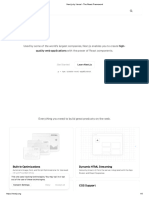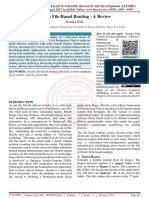0% found this document useful (0 votes)
8 views3 pagesNext
Next.js is a React framework designed for building server-side rendered and static websites, featuring capabilities like server-side rendering, static site generation, and file-based routing. The file structure includes directories for routes, static assets, and styles, while dynamic routing and various data fetching methods enhance functionality. Best practices include using optimized images and client-side navigation, with Vercel as the recommended deployment platform.
Uploaded by
asheeshsahu6367Copyright
© © All Rights Reserved
We take content rights seriously. If you suspect this is your content, claim it here.
Available Formats
Download as DOCX, PDF, TXT or read online on Scribd
0% found this document useful (0 votes)
8 views3 pagesNext
Next.js is a React framework designed for building server-side rendered and static websites, featuring capabilities like server-side rendering, static site generation, and file-based routing. The file structure includes directories for routes, static assets, and styles, while dynamic routing and various data fetching methods enhance functionality. Best practices include using optimized images and client-side navigation, with Vercel as the recommended deployment platform.
Uploaded by
asheeshsahu6367Copyright
© © All Rights Reserved
We take content rights seriously. If you suspect this is your content, claim it here.
Available Formats
Download as DOCX, PDF, TXT or read online on Scribd
/ 3






























































